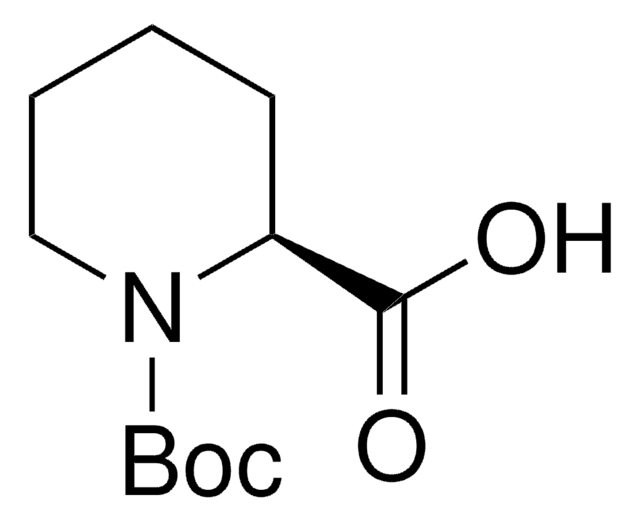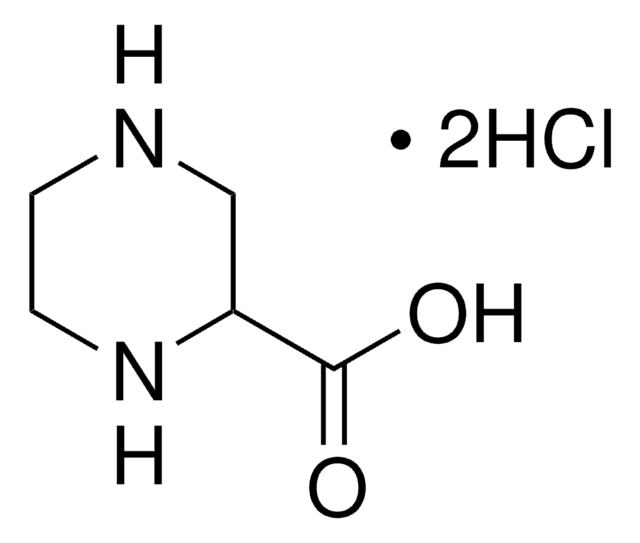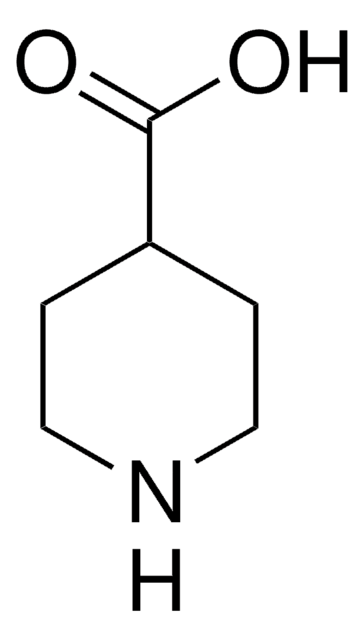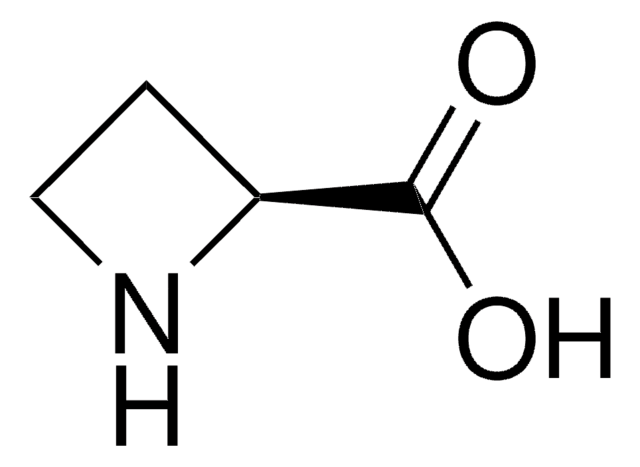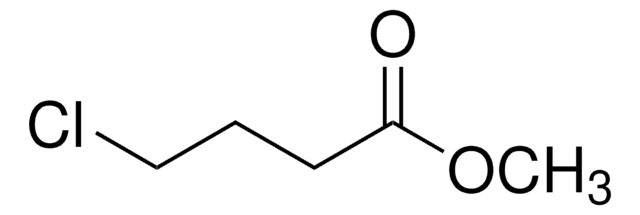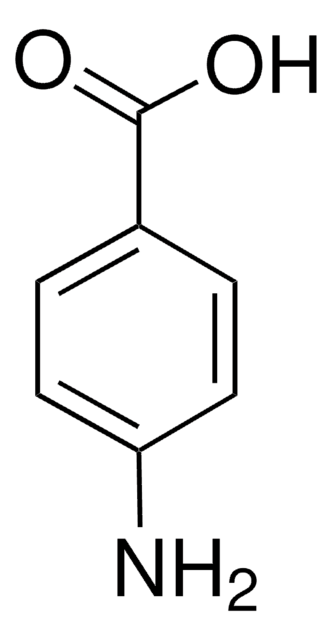P45850
Pipecolinic acid
98%, for peptide synthesis
Synonym(s):
(±)-Piperidine-2-carboxylic acid, 2-Piperidinecarboxylic acid, Homoproline, Pipecolic acid free base
About This Item
Recommended Products
product name
Pipecolinic acid, 98%
Assay
98%
form
powder and chunks
reaction suitability
reaction type: solution phase peptide synthesis
technique(s)
LC/MS: suitable
color
white to beige
mp
282 °C (dec.) (lit.)
SMILES string
OC(=O)C1CCCCN1
InChI
1S/C6H11NO2/c8-6(9)5-3-1-2-4-7-5/h5,7H,1-4H2,(H,8,9)
InChI key
HXEACLLIILLPRG-UHFFFAOYSA-N
Looking for similar products? Visit Product Comparison Guide
General description
Signal Word
Warning
Hazard Statements
Precautionary Statements
Hazard Classifications
Eye Irrit. 2 - Skin Irrit. 2 - STOT SE 3
Target Organs
Respiratory system
Storage Class Code
11 - Combustible Solids
WGK
WGK 3
Flash Point(F)
Not applicable
Flash Point(C)
Not applicable
Personal Protective Equipment
Choose from one of the most recent versions:
Already Own This Product?
Find documentation for the products that you have recently purchased in the Document Library.
Chromatograms
application for HPLCOur team of scientists has experience in all areas of research including Life Science, Material Science, Chemical Synthesis, Chromatography, Analytical and many others.
Contact Technical Service
